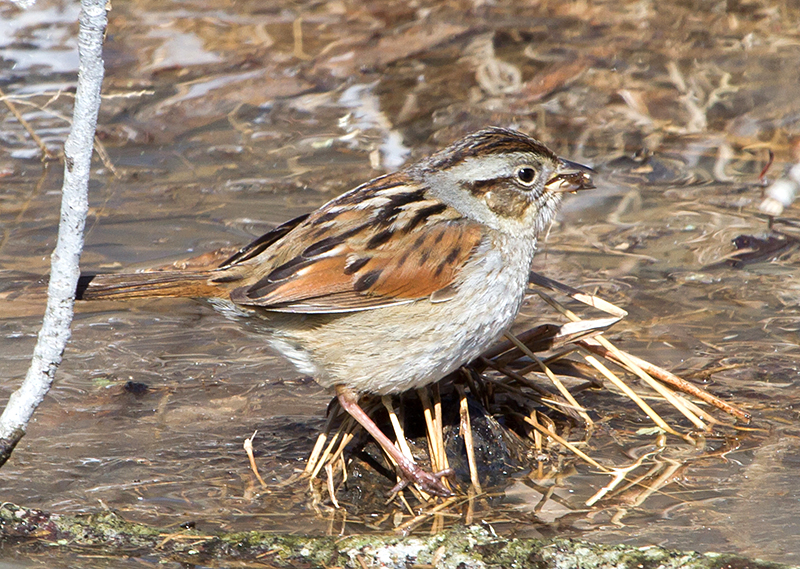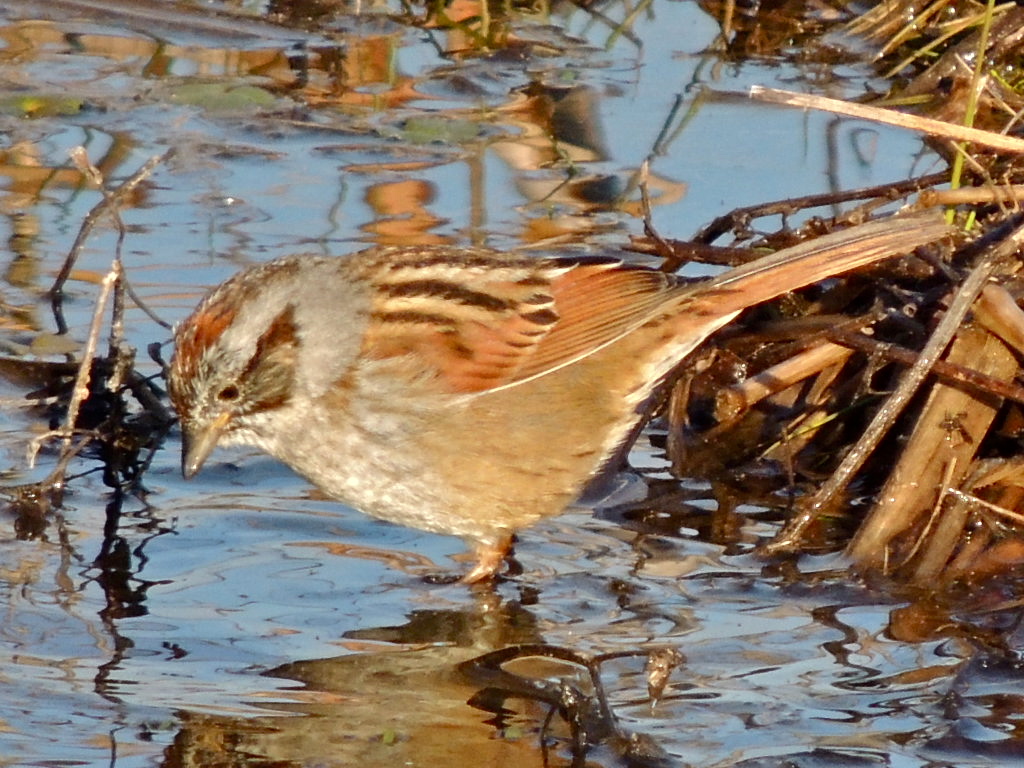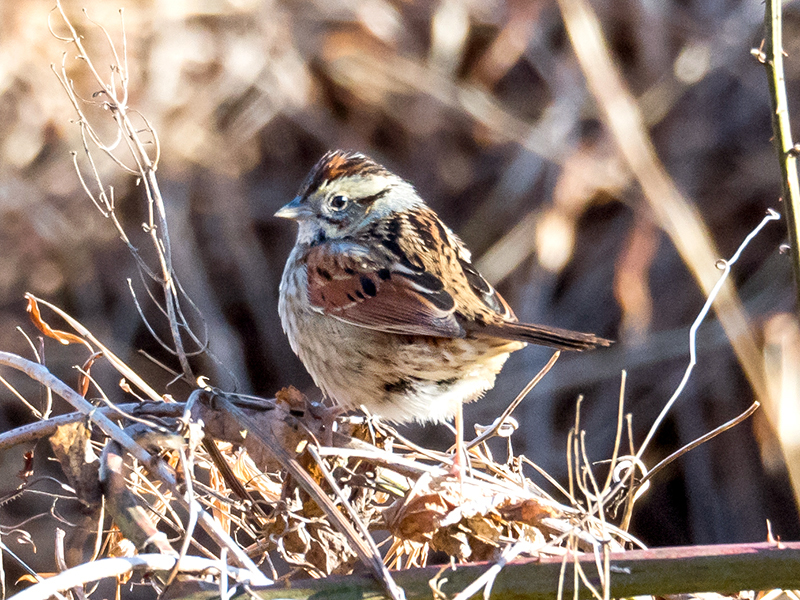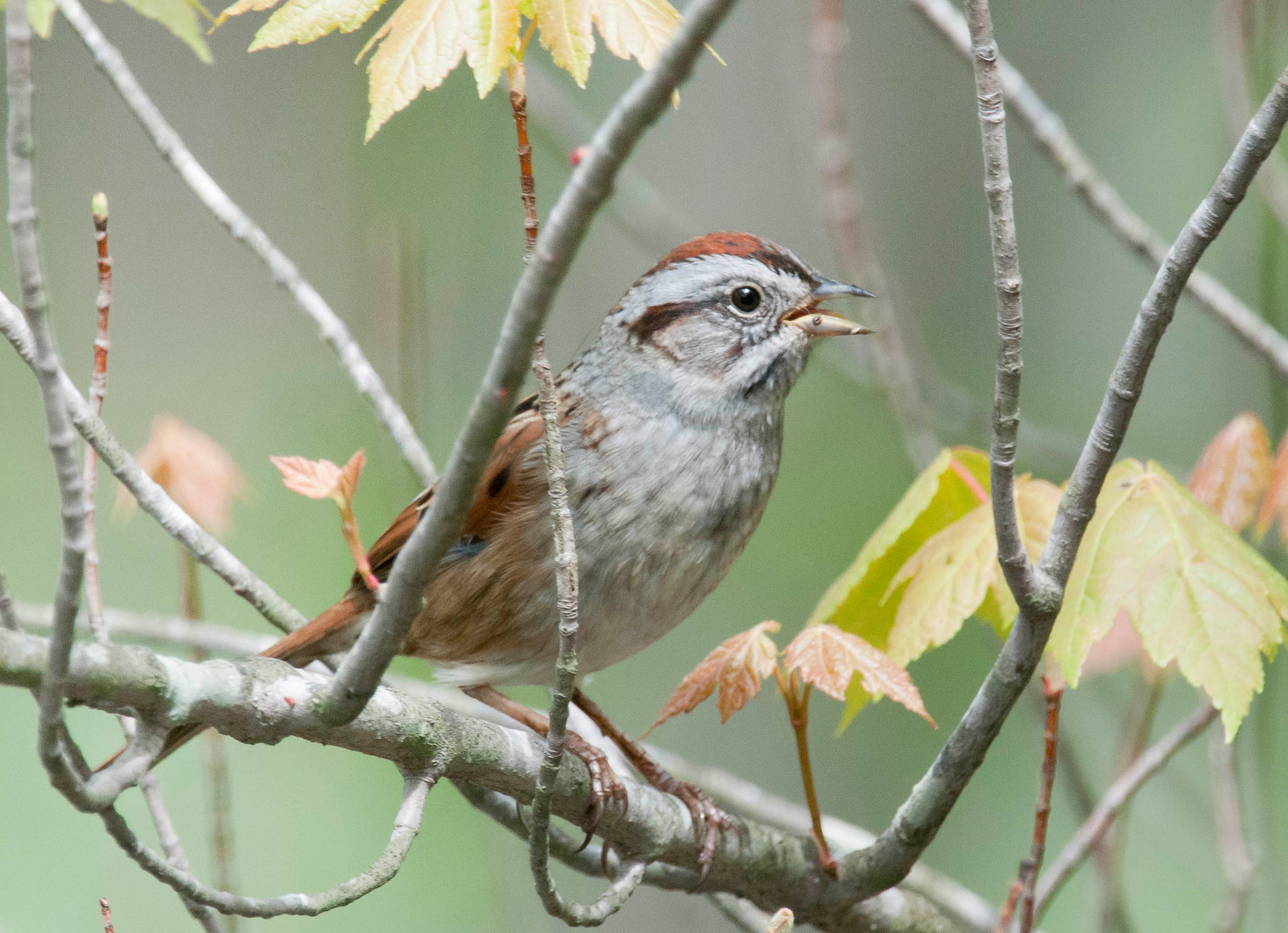| Early Spring Date: | March 21 |
| Late Spring Date: | May 23 |
| Best Dates to See in Spring: | April 12-24 |
Spring: Swamp Sparrows are winter residents in the Washington metro area, and some stick around to breed. Most head north to breeding areas in the northern United States and Canada. Each year, a small number pass through Monticello Park. You are most likely to see one in the park during the third week in April.
Fall: During most years, no Swamp Sparrows are seen at Monticello during the fall.
Where to See Them in the Park
Swamp Sparrows prefer marshes and other areas near water. When they are at Monticello, they spend most of their time in or near the stream.
Physical Description

Adult Swamp Sparrows have a gray face, a rufous crown, and a rufous triangle on their cheek. The underparts are grayish with faint markings. The sexes are similar.


They have rufous in their wings and tail, and their back is streaked.
Vocalizations

Swamp Sparrows sound a lot like Chipping Sparrows. Their song is a trill that can be delivered either slowly or quickly, depending on the individual bird.
Hear the vocalizations of the Swamp Sparrow.
Notes
Swamp Sparrows are not usually found in swamps. Marshes are wetlands with grasses, while swamps are wetlands with trees. A more accurate name would be Marsh Sparrow.
Origin of Names
Common Names: Swamp from their wetlands habitat. Sparrow from the Anglo-Saxon spearwa, which means flutterer.
Genus Name: Melospiza means song finch.
Species Name: Georgiana means of Georgia, where the first specimen was collected.
Swamp Sparrow video footage
Return to the Index
